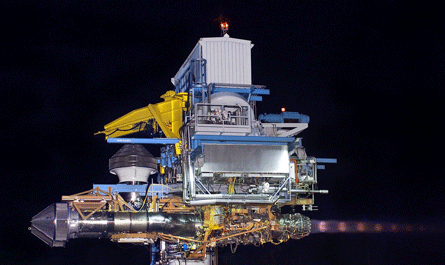Pratt & Whitney has launched a multi-year effort to lower costs for the F135 engine in response to pressure from the F-35 Joint Strike Fighter's programme office.
The F135 programme has won recent praise for overcoming a blade fatigue problem that set back testing for the short take-off and vertical landing (STOVL) variant. But as the debate over funding for the General Electric/Rolls-Royce F136 alternate engine heats up, P&W executives acknowledge that production costs for the F135 have not declined at the rate desired by JSF programme officials.
In mid-June, a "blue-ribbon" committee met at P&W's headquarters in Hartford, Connecticut, to review the engine manufacturer's cost-reduction strategy, which was accepted, says Hugh Risseeuw, P&W's director for navy and marine corps programmes.
The strategy includes higher upfront costs in some areas to make investments in the design of some engine components, he adds.
 |
|---|
© P&W |
Despite the upfront investment, P&W's goal is to show improvement on the F135's costs in the next negotiated contract, says Risseeuw. The fourth lot of low-rate initial production is scheduled for contract award in the second quarter of 2010. This includes funding for at least 30 F135s, but Congress is debating whether to insert $600 million to also buy four F136s and continue development of the controversial rival.
Concerns about the F135's costs are driven by P&W's inability so far to achieve the expected "learning curve", or the rate of improving efficiency normally seen with steadily increasing production rates.
F-35 suppliers are required to achieve a rate of improving efficiency known as an 88% learning curve. This benchmark means costs are projected to decline by about 12% every time the production rate doubles. By contrast, a 100% learning curve means that costs never decline.
So far, P&W's learning curve for the F135 is "about halfway" between the goal of 88% and cost stagnation at 100%, Risseeuw says. This means the projected cost reduction when the production rate is doubled would also fall short of the 12% objective.
Risseeuw says the F135's cost reduction problem may have prompted a recent comment by JSF programme executive officer Brig Gen David Heinz, who said on 3 June: "I do not believe yet that Pratt feels compelled to act as though they are in competition."
Source: Flight International



















